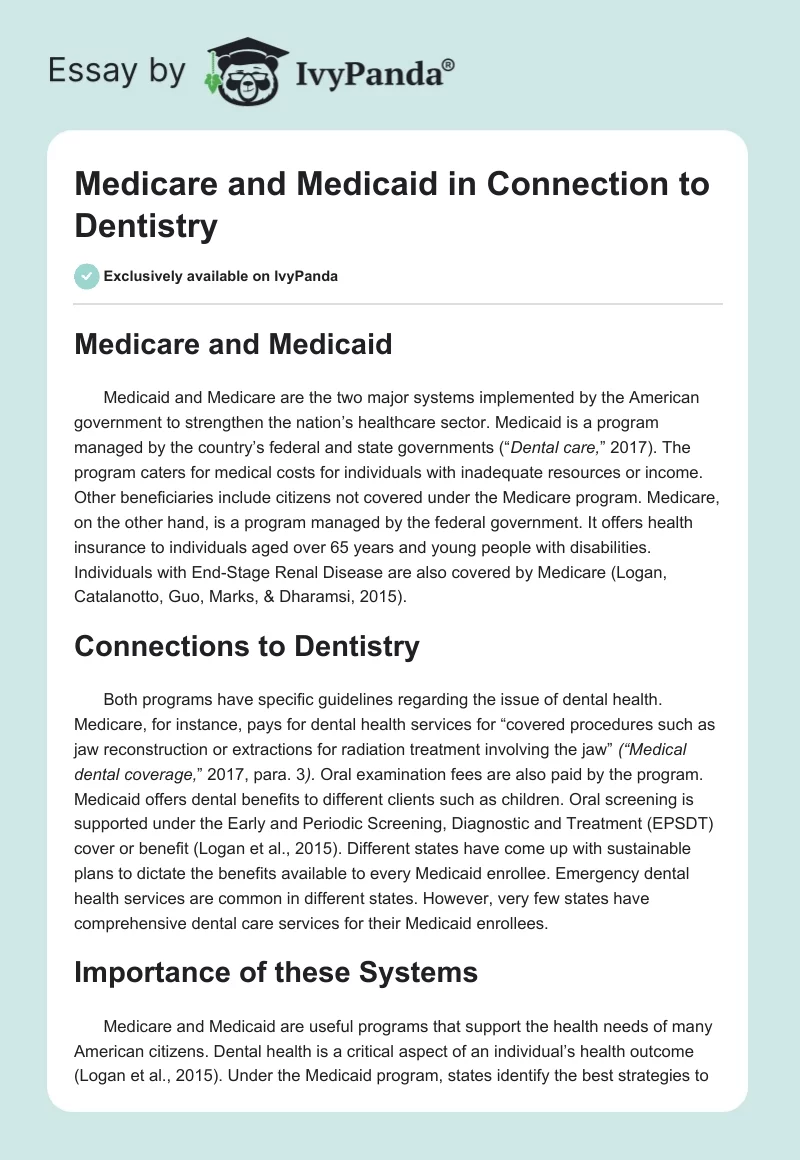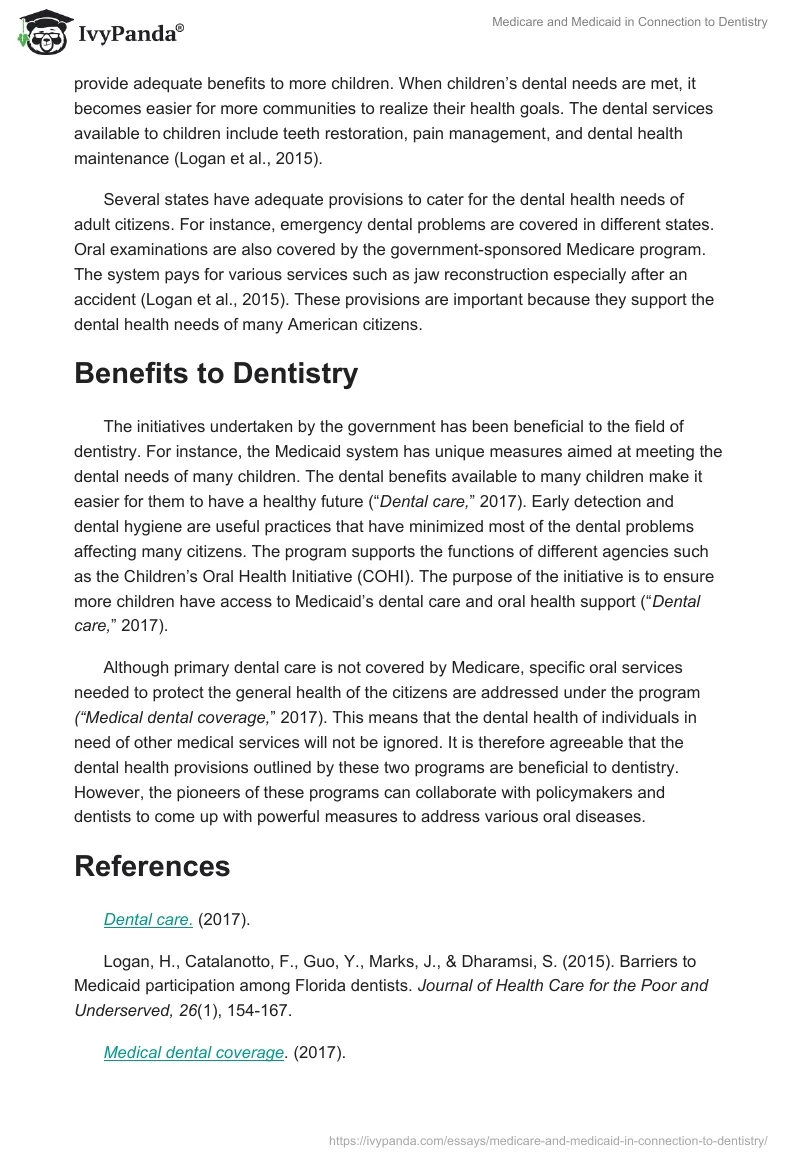Medicare and Medicaid
Medicaid and Medicare are the two major systems implemented by the American government to strengthen the nation’s healthcare sector. Medicaid is a program managed by the country’s federal and state governments (“Dental care,” 2017). The program caters for medical costs for individuals with inadequate resources or income. Other beneficiaries include citizens not covered under the Medicare program. Medicare, on the other hand, is a program managed by the federal government. It offers health insurance to individuals aged over 65 years and young people with disabilities. Individuals with End-Stage Renal Disease are also covered by Medicare (Logan, Catalanotto, Guo, Marks, & Dharamsi, 2015).
Connections to Dentistry
Both programs have specific guidelines regarding the issue of dental health. Medicare, for instance, pays for dental health services for “covered procedures such as jaw reconstruction or extractions for radiation treatment involving the jaw” (“Medical dental coverage,” 2017, para. 3). Oral examination fees are also paid by the program. Medicaid offers dental benefits to different clients such as children. Oral screening is supported under the Early and Periodic Screening, Diagnostic and Treatment (EPSDT) cover or benefit (Logan et al., 2015). Different states have come up with sustainable plans to dictate the benefits available to every Medicaid enrollee. Emergency dental health services are common in different states. However, very few states have comprehensive dental care services for their Medicaid enrollees.
Importance of these Systems
Medicare and Medicaid are useful programs that support the health needs of many American citizens. Dental health is a critical aspect of an individual’s health outcome (Logan et al., 2015). Under the Medicaid program, states identify the best strategies to provide adequate benefits to more children. When children’s dental needs are met, it becomes easier for more communities to realize their health goals. The dental services available to children include teeth restoration, pain management, and dental health maintenance (Logan et al., 2015).
Several states have adequate provisions to cater for the dental health needs of adult citizens. For instance, emergency dental problems are covered in different states. Oral examinations are also covered by the government-sponsored Medicare program. The system pays for various services such as jaw reconstruction especially after an accident (Logan et al., 2015). These provisions are important because they support the dental health needs of many American citizens.
Benefits to Dentistry
The initiatives undertaken by the government has been beneficial to the field of dentistry. For instance, the Medicaid system has unique measures aimed at meeting the dental needs of many children. The dental benefits available to many children make it easier for them to have a healthy future (“Dental care,” 2017). Early detection and dental hygiene are useful practices that have minimized most of the dental problems affecting many citizens. The program supports the functions of different agencies such as the Children’s Oral Health Initiative (COHI). The purpose of the initiative is to ensure more children have access to Medicaid’s dental care and oral health support (“Dental care,” 2017).
Although primary dental care is not covered by Medicare, specific oral services needed to protect the general health of the citizens are addressed under the program (“Medical dental coverage,” 2017). This means that the dental health of individuals in need of other medical services will not be ignored. It is therefore agreeable that the dental health provisions outlined by these two programs are beneficial to dentistry. However, the pioneers of these programs can collaborate with policymakers and dentists to come up with powerful measures to address various oral diseases.
References
Dental care. (2017).
Logan, H., Catalanotto, F., Guo, Y., Marks, J., & Dharamsi, S. (2015). Barriers to Medicaid participation among Florida dentists. Journal of Health Care for the Poor and Underserved, 26(1), 154-167.
Medical dental coverage. (2017).


